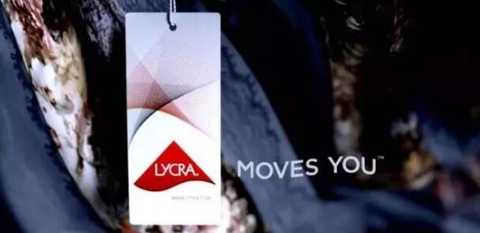In the past few days, Invista, a US polymer and fiber supplier, announced that it has signed a definitive agreement with Shandong Ruyi Technology Group to sell its apparel and advanced textiles business in one of the company's four business segments. The INVISTA business involved in this transaction includes:
INVISTA apparel business related fiber and brand portfolio, including LYCRA® fiber, Lycra HYFIT® fiber, COOLMAX® fiber, THERMOLITE® fiber and thermal insulation material, ELASPAN® fiber, SUPPLEX® fiber and TACTEL® fiber product
TERATHANE® PTMEG (polytetrahydrofuran), BDO (1,4 butanediol), THF (tetrahydrofuran) production
All relevant technical, operational, business and functional personnel in relevant global production plants, R&D centers and sales offices (about 3,000 people worldwide)
As soon as this news came out, it earned the attention of the textile people. Today we will talk about Lycra fiber.

Lycra is a registered trademark of the artificial elastic fiber developed by DuPont in 1959 (trade name is Spandex, or spandex), and its chemical name is segmental polyurethane. The fiber is a block molecular chain composed of a soft segment and a rigid segment, and it is such a molecular structure that gives Lycra excellent elongation and elastic recovery properties. Lycra can stretch to 4 to 7 times its original length and has a recovery rate of 100%. Compared with rubber, it has stronger and longer elasticity and 1/3 lighter weight.
01, the origin of Lycra fiber
In 1930, Bayer and IG developed polyurethanes, which were first used in synthetic rubber and plastics. By 1954, DuPont of the United States began to develop spandex fibers. In 1959, the industrial production of dry spinning of polyurethane solution was first realized, named "Lycra", and then it was produced in Europe and Japan, which opened the curtain of a new generation of elastic fiber.
02, performance of Lycra fiber
1. Wide range of fineness
The fineness ranges from 22 to 4,778 dtex, and the finest rubber yarn is 156 dtex. Since Lycra is more uniform in warp tension in weaving than other elastic fibers, the fabric containing Lycra has good flatness and soft handfeel.
2. Good stretching and resilience
Appropriate recovery and retention give the elastic fabric a comfortable stretch, form retention, fit, formability, and the like. The Leica fiber resilience is shown in the table below.
Lycra's tensile strength and elongation balance are also very good, which gives the fabric good resilience and comfort, and long-lasting elasticity.
3. Excellent heat setting
In order for the stretch fabric to have satisfactory dimensional stability during processing and use, heat setting must be performed during dyeing. Generally, the softening temperature of the fibers is 150-210 ° C, yellow at 150 ° C, and the strength at 190 ° C is decreased, and even sticky. Lycra has a melting point of up to 220 ° C and a heat setting temperature of 195 ° C or higher, while any other brand of any elastic fiber has a maximum heat setting temperature of 180 ° C. At the same time, Lycra can adapt to more stringent dyeing and finishing process conditions, such as a wide pH range and high temperature treatment, not easy to yellow aging. Lycra's high heat setting efficiency means minimal impact on other properties of the fabric under the most adequate heat setting conditions.
4. Water washing rate and increase rate are low
The water washing rate and the increase rate of the fabric are the main factors affecting the dimensional stability and wrinkle resistance of the garment, and also an important index reflecting the plastic deformation of the fabric and the garment. The lower the water washing shrinkage rate and the increase rate, the good shape retention of the garment. The fabric is not easily deformed and wrinkled.
5. Anti-aging and not easy to yellow
Fabrics containing spandex yarn or processed garments, over time, repeated use of washing will produce yellowing, while elastic fabrics containing Lycra will be placed for three months, whiteness is much better than other spandex fabrics, whiteness is maintained It is 10%~20% better than the average product, and has good anti-aging properties.
6. Good wear resistance
In the range of 50%~300% elongation, 220 fatigue tests per minute can be used for more than 1 million times without breaking.
7. Light resistance and chlorine resistance
Lycra in the light fastness tester for 40 hours, the strength is reduced by about 20%.
Lycra has some resistance to general chemicals, but is relatively sensitive to chlorine (NaClO bleach), which can cause yellowing damage to the fiber, making it lose its elasticity and extensibility, which is one of its main drawbacks. Oxygenated bleaches are relatively stable.
03, the application of Lycra fiber
Adding Lycra to the ready-to-wear, the folds can be easily and automatically restored, the clothes are more scooped and not easily deformed, and they are free to move and feel free and new. Even if you make rigorous suits, coats, etc., there is no urgency and crampiness. Knitwear, underwear, bodybuilding pants and other knitwear add a little Lycra, which is both fit and comfortable, and can be worn on the body and can move with you.
The extraordinary elastic and restoring properties of Lycra fiber enhance the quality of its fabrics and garments, making the garments more comfortable, comfortable and free to move, while improving fit, shape retention, drape and wrinkle recovery.
• The Lycra fiber brand makes swimwear and women's underwear more attractive and fit.
• The use of Lycra fiber makes all kinds of hosiery softer, fit and durable. Lycra fiber helps to improve the performance of sportswear, making the garment more adaptable to aerodynamics and more comfortable.
• The Lycra fiber brand in knitwear has increased its mobility and sagging, making the garment more conformable and more mobile.
• Lycra fibers in knitwear allow the knitwear to retain shape after repeated wear and washing.
Editor in charge: Xu Yuehua
Shirts And Blouses,Solid Woven Shirt,Sleeve Linen Blouse,V Neck Blouse
SHAOXING YINBO IMP&EXP CO.,LTD , https://www.yinbotex.com